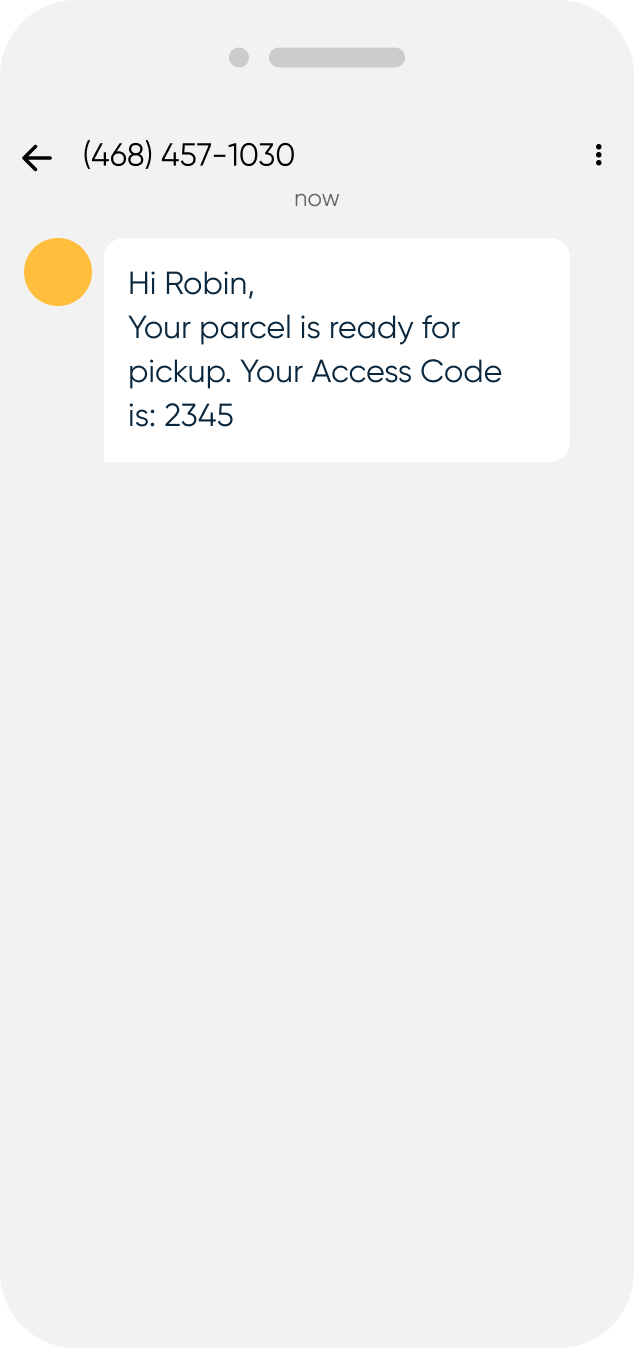In this article:
- A2P 10DLC Q&A with messaging experts from Sinch & The Campaign Registry (TCR)
-
Download the guide
- What is 10DLC, and what features does it support?
- How long does it take to get a 10DLC live?*
- How much throughput will I get per 10DLC?*
- My previous messaging provider has already vetted my brand. Do I need to go through the process again?
- Is there any benefit to having a single use-case campaign vs a mixed use-case campaign?
- How to migrate my existing numbers to 10DLC?
- When is the deadline to move legacy Long and Shared Short Codes to 10DLC?
- What are the non-compliance fees associated with 10DLC?
A2P 10DLC Q&A with messaging experts from Sinch & The Campaign Registry (TCR)
Conversational A2P 10DLC messaging solutions are still pretty new, so it’s only natural to have questions.
Don’t worry though, to help you navigate the 10DLC space and build a rock-solid migration strategy we’ve got some tools to help you out.
Take a look at our introductory webinar: 10DLC: the new standard in business messaging, where we share 10DLC status updates, compare 10DLC with Toll-Free Numbers and dedicated Short Codes, cover best practices, most common use cases, and commercials.
If you’re looking for something a little more in-depth, listen to our deep-dive session, 10DLC: Future-proof customer engagement and get a competitive edge, to understand how to make the most of 10DLC messaging and implement it successfully.
Oh, and don't miss our Step-by-step guide to 10DLC messaging that outlines a 5-step process of moving P2P Long Codes and Shared Short Codes over to 10DLC.

Download the guide
Still got questions? Then our Q&A blog, with advice from Sinch and TCR experts, is here to save the day. We caught up with Jonathan Vimont, Director of US Messaging at Sinch, Stefan Heller, VP of Business Development, at The Campaign Registry (TCR) to address some FAQs.
What is 10DLC, and what features does it support?
10–Digit Long Codes are a carrier sanctioned cost-effective solution for businesses to send A2P text messaging, using 10-digit (non-wireless) local numbers available in the North American Numbering Plan (NANP). Brands and businesses can use a single or pool/bundle of numbers for their messaging campaigns to engage with customers and create brand recognition. Features supported on 10DLC include:
- SMS messages
- MMS messages
- Voice calls
- Keywords - opt-in/out or set special keywords
- Concatenated messages
- Shortened URL – carriers will filter generic or public URLs such as Bit.ly
10DLC does not support handset delivery receipts (DLRs); only network DLR’s are available.

How long does it take to get a 10DLC live?*
There are three common scenarios with various timelines depending on the complexity of the process. In all scenarios, vetting can be done either by Sinch or by the customer directly via the TCR portal/API.
1. Customer enters their Campaign details in the Sinch Portal and requests numbers, Vetting is encouraged and will be required for non-Russel 3000 companies: 1-5 business days
- Sinch registers Brand and Campaign(s) via TCR
- Sinch procures and provisions the 10DLC number(s) to clients account
2. Customer has existing numbers and wants to port/migrate to Sinch: 3-5 business days
- Customer purchases their own numbers and provides them to Sinch along with their Letter of Authorisation (LOA) NOTE: Customer MUST specify if Voice will be included, if so they will need to set up or add these numbers to Sinch Inbound Voice in parallel
- Same process applies as Step 1 for Customer to register Brand and Campaigns via TCR
- Sinch submits the SMS port and A2P Tagging (OSR updates) once Campaign and Brand are ready for Carrier Approval to minimize any downtime
3. Customer handles 10DLC procurement and campaign registration but would like to use Sinch as their secondary provider: 3-5 business days
- Customer must establish relationship and create Account as CSP within TCR
- Customer registers Brands and Campaign(s) via TCR and selects Sinch as their ‘provider’ or DCA
- Customer provides Sinch with the list of 10DLCs and NetNumber ID (NNID) (if holding their own NNID**)
- Sinch Reviews and Approves both the Brand and Campaign(s) and sets up the numbers with the Carriers defined by the Customer for Sinch to manage
In all scenarios, vetting can be done either by Sinch or by the customer directly via the TCR portal/API.
* The provided timelines will be significantly reduced in April 2021 due to automation of the registration and number procurement process by the end of Q3.
**Carriers require minimum of 14 business days to provision a new customer’s NNID
How much throughput will I get per 10DLC?*
Throughput is determined by the carriers based on your Brand Score as well as the type of campaign not on the amount of numbers/10DLCs associated with a campaign.
The table below explains how AT&T and T-Mobile/Sprint define each message tier and map trust scores. Verizon is also working on defining its process.
| Message tier | Use case (risk level) | Use case/examples | Campaign type | Trust score | AT&T TPM | T-Mobile daily SMS bucket |
|---|---|---|---|---|---|---|
| A/top | Standard (low-risk provider) | 2FA/authentication/customer care/operations/notifications, etc. | Declared use case | 76-100 | 4500 | 200,000 |
| B | Mixed/marketing | Mixed/marketing | 86-100 | 4500 | 200,000 | |
| C/high-mid | Standard (medium risk provider) | 2FA/authentication/customer care/operations/notifications, etc. | Declared use case | 51-75 | 2400 | 40,000 |
| D | Mixed/marketing | Mixed/marketing | 66-85 | 2400 | 40,000 | |
| E/low-mid | Standard (higher risk provider) | 2FA/authentication/customer care/operations/notifications, etc. | Declared use case | 16-50 | 240 | 10,000 |
| F | Mixed/marketing | Mixed/marketing | 26-65 | 240 | 10,000 | |
| T/low | Basic/default (highest risk provider) | Low volume mixed | Low volume mixed | 0-25 | 12 | 2,000 |
| G | Special | Group messaging (pools) incl. bridge services or anonymization | Special | TBD | 600 | TBD |
| P | Special | Charity | Special | TBD | 60 | TBD |
| S | Special | Social engagement | Special | TBD | 60000 | TBD |
| Q | Special | Political messaging | Special | TBD | Unlimited is possible | Unlimited |
| X | Special | Emergency services/public safety | Special | TBD | Unlimited is possible | Unlimited |
| N | Special | Sole Proprietorship UB's (Unincorporated Businesses) | Special | TBD | TBD | Special business |
| Y & W | Special | Carrier Exemption class | Special | N/A | Very high to unlimited | Special business |
| Z | Basic | Free Trial | Developer | N/A | 6 | ~300 |
Carriers require a ‘special business review’ request, in case a brand is not satisfied with the defined TPM or message quota. It will cost $5,000 in the future for a special business review, but right now the fee is waived. Sinch will provide 30 days notice to customers when this will go into effect.
*Please note that Russell 3000 enterprises are exempt from vetting.
My previous messaging provider has already vetted my brand. Do I need to go through the process again?
No, if your brand has already been vetted, Sinch can import the existing vetting trust score into your campaign. However, to register your brand, basic company details are still required.
Please note that if you do not wish to be vetted at all, your campaign will automatically fall into the T/Low class, resulting in very limited throughput.
Is there any benefit to having a single use-case campaign vs a mixed use-case campaign?
A single use-case campaign refers to ‘standard’ use-cases such as notifications, alerts, OTP, but sometimes brands decide to file notifications and marketing traffic together under one campaign: which we refer to as a ‘mixed-use/marketing campaign.’
Typically, single use-case or standard campaigns receive higher throughput and lower surcharges than mixed use-case campaigns. This is designed to incentivize declaring a single use-case, as this type of campaign provides the greatest transparency for the market.
How to migrate my existing numbers to 10DLC?
Getting new numbers is the simplest option and is recommended to avoid any hiccups and downtimes. However, if you need to keep your current numbers for any specific business reason (e.g. customer support, brand equity), we can help you port them. It’s possible to provision your landlines and long codes as A2P 10DLC.
When is the deadline to move legacy Long and Shared Short Codes to 10DLC?
Carriers require all A2P Long Code SMS messaging traffic to be registered and moved to sanctioned 10DLC route ASAP. As a reminder, please note Shared Short Codes that are not controlled by a single message sender/content will be at risk of termination.
What are the non-compliance fees associated with 10DLC?
Below are the announced carrier non-compliance fees and their definitions:
- Text Enablement: $10,000 USD if a company or a message sender text-enables a 10-digit NANP telephone number and sends messages before verification of message sender ownership
- Grey Route: $10 USD per message for each 10DLC message sent by a message sender via a P2P route
- Program Evasion: $1,000 USD for each unique instance of a violation (snowshoeing, dynamic routing, spam filter evasion, unapproved campaign service)
- Content violation: $10,000 USD for the third and any subsequent notification of a violation from the same content provider
For more 10DLC-related questions, we recommend checking out our 10DLC knowledge base articles on the Sinch Support site.



